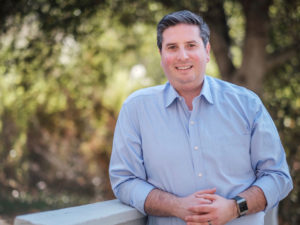
1. Transportation remains the largest source of greenhouse gases in California, and neighborhood oil extraction has been shown to pose significant health and safety risks to residents. Heavy spending by oil and gas companies in local elections casts doubt on whether voters can trust their elected leaders to protect them from these and other impacts. Will you pledge to refuse any donations, whether to your campaign or officeholder account, from the fossil fuel lobby?
Reducing greenhouse gases in Glendale, the City that I’ve called home for so many years, is a very important issue for me. I do not anticipate receiving donations from the fossil fuel lobby because of the stance that I already have on environmental issues.
2. Glendale’s car insurance rates are the highest in California, largely related to the dangerous state of Glendale streets and the high likelihood that residents will be involved or the victims of a collision. Do you see these issues providing a mandate to take action to make Glendale streets safer for all road users, and to reconfigure roadways and intersections to tamp down speeding on city streets?
Making Glendale’s streets safer for residents and the people who live and work in this city is imperative. I hope to work with experts in order to introduce innovative examples of how to create safer streets for pedestrians, bikers and motorists. Designing designated bike lanes that go beyond the current sharows and other cosmetic markers will go a long way in ensuring the safety of both pedestrians and motorists. Motorist, pedestrian and bike safety will go a long way in reducing our insurance fees and can serve as an indicator of our success in making our streets safer.
3. A growing number of cities in Los Angeles County have adopted a “Vision Zero” policy with the goal of preventing traffic related deaths through roadway design. Do you support a Vision Zero policy for Glendale? How do you think the City of Glendale should engage with its community of residents and businesses in order to reconfigure streets to eliminate roadway deaths?
I support and will fight for the adoption of a “Vision Zero” plan like the one that was first introduced in Sweden. The question isn’t adoption, but rather why our city council has waited so long in implementing this philosophy. We need to work collectively to reduce the number of injuries and deaths on our roadways. LA County’s Vision Zero policy can be incorporated into the City of Glendale as well, with a focus on education and enforcement.
4. Glendale’s’ traffic woes are compounded by the reality that roads around schools are frequently unsafe. This discourages parents from allowing their children to walk or bike to school, and makes the health benefits of active transportation inaccessible for most Glendale youth. If elected councilmember, how would you prioritize student safety and active transportation options around schools?
As a parent myself, I too worry about how safe my son is while walking or biking (actually, he only uses a scooter at this time – he’s only 5). But many times I worry that my son, wife and I may end up as someone’s hood ornament. Our streets and sidewalks should be safe for our students to get to and from school. I would like to continue to grow the “Walk to School Day” events throughout the year at the City, to not only educate children on how to safely use the streets, but to also educate motorists driving throughout the City. Additionally, I would like to work closely with our Traffic and Transportation teams to create safer streets for pedestrians and bicyclists. I have successfully worked with both residents and the city in installing stop signs at various intersections at the city as well as taking the bus and walking to pre-school wit my son every year he was old enough to walk.
5. Glendale streets lack a safe bike lane network and the bike routes that are in place too often consist of narrow unprotected bike lanes placed directly adjacent to fast-moving cars or shared use lanes marked with ‘sharrows’ in which people on bikes are put in direct conflict with drivers. Do you see a benefit to building out a robust and connected bike lane network with protected bike lanes to enable residents of all ages and abilities to get around safely by bike, and if so, how will you work to make this a reality?
Studies have showed that protected bike lanes create more bikers, and we should look into creating these types of lanes in Glendale as well. Better protected bike lanes like they have in other cities and most notably Montreal, Canada, will create healthier Glendale residents, will reduce green house gases as well as traffic. Glendale is a great place to bike, and I hope to see more bikers in the near future.
6. In 2016, over 70% of Los Angeles County voters supported Measure M, a ½ cent tax to improve mobility options for Angelenos, including a number of bus rapid transit (BRT) lines such as the North Hollywood-Pasadena Transit Corridor. The project was long championed by Mayor Ara Najarian to provide service from central Glendale to and from L.A.’s regional transit network, and. Do you support the use of transit signal priority and dedicated bus lanes on city streets to provide quality and efficient transit service for Glendale residents?
I support Measure M projects in Glendale, especially to help Angelenos easily move around Glendale, and to connect Glendale with Los Angeles and neighboring cities through our transportation hub. If elected, I will continue to work with various departments in Glendale to continue our efforts in promoting public transportation. I will also personally lobby and push for Glendale to continue to get our share of funding so that our city isn’t isolated from regional transportation planning that mainly focuses on access to the Burbank Airport and not on our city’s key areas of entertainment, business and commerce.
